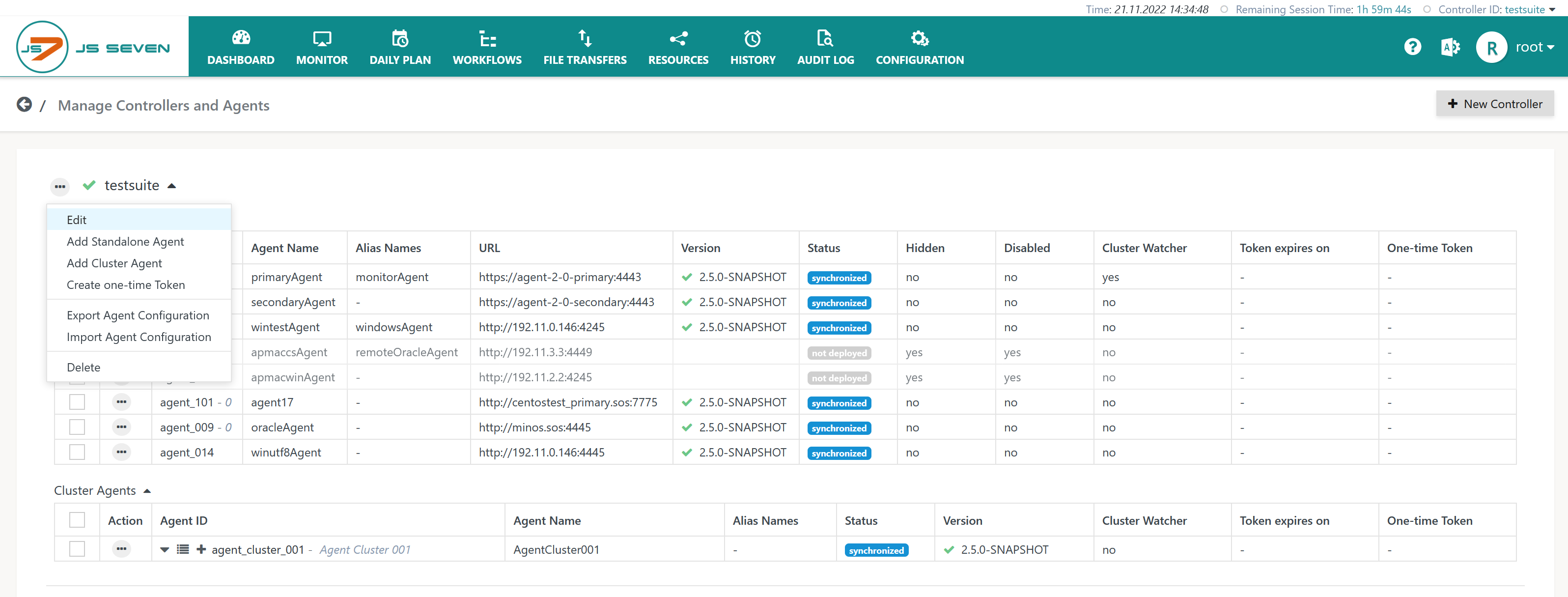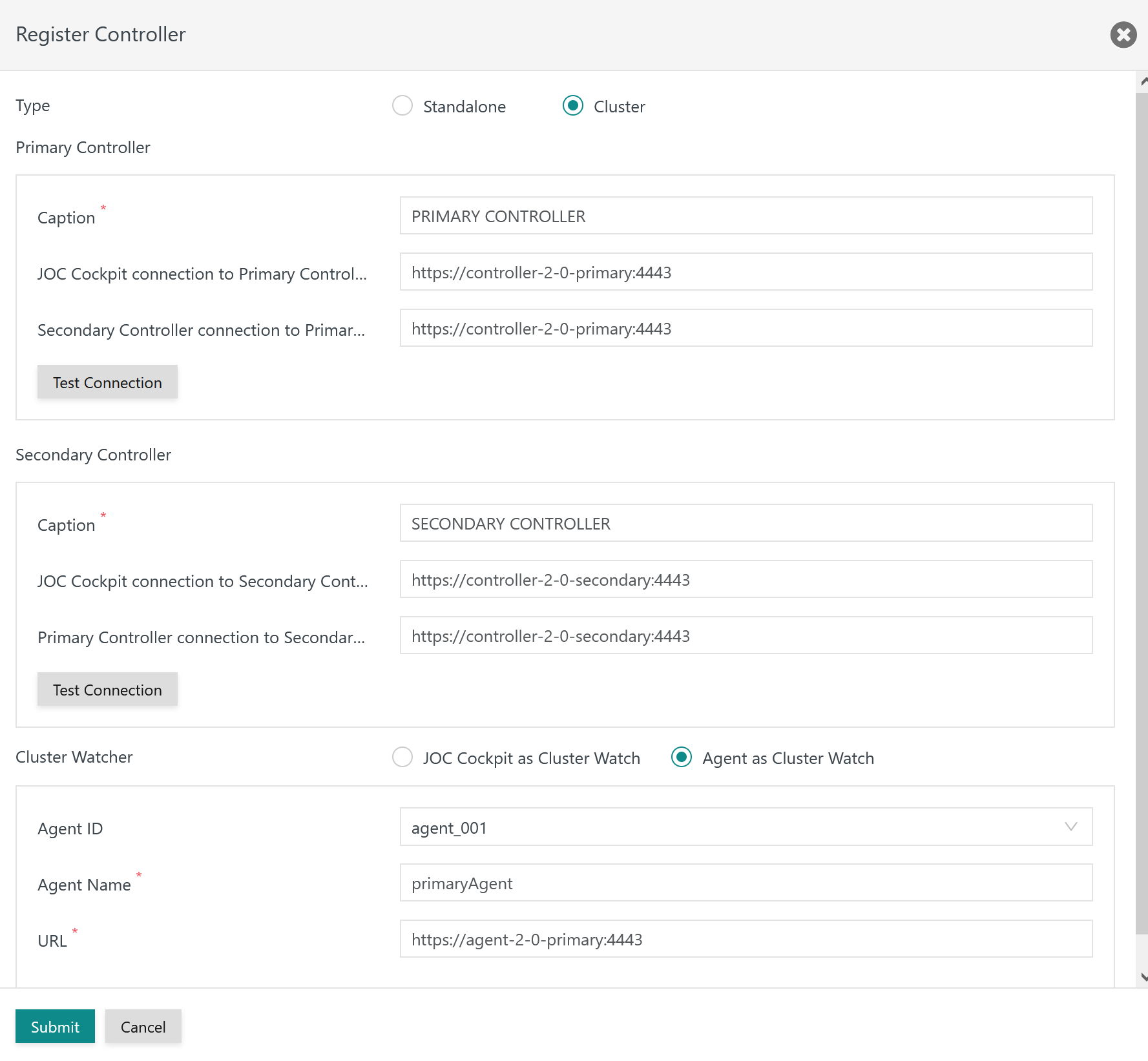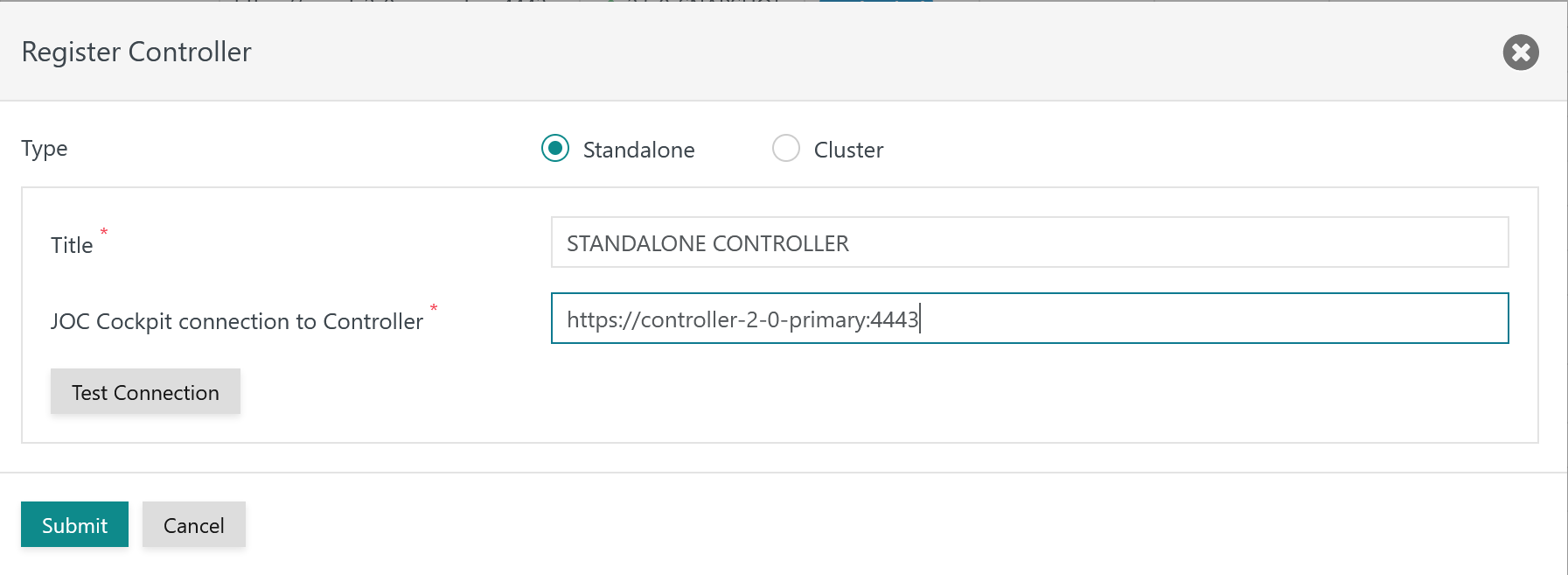Introduction
Users might choose to convert a Standalone Controller to a Controller Cluster:
- the Controller Cluster provides high availability,
- the Controller Cluster is subject to the JS7 - License. Both JOC Cockpit and Controller instance require a license keying being present:
Converting a Standalone Controller to a Controller Cluster offers to revert the Cluster at any later point in time, see JS7 - How to convert a Controller Cluster to a Standalone Controller.
Converting the Standalone Controller
Stopping the Controller Cluster
As a prerequisite both active and standby Controller instances have to be terminated.
Reverting the Controller Journal
Users decide which Controller instance should become the Standalone Controller to continue operations.
- In most situations this will be the previously active Controller instance.
- Users should remove the journal of the Controller instance that is no longer in use. More precisely users should remove the contents of the unused Controller instance's
statefolder. This measure prevents a situation when later on the unused Controller instance will be started by chance and will invite the Standalone Controller instance to re-establish the cluster.
Reverting the Controller journal can be performed with the following command:
# reverting Controller journal for Unix with no running Controller instances ./controller_instance.sh revoke # reverting Controller journal for Unix with a running Controller instance that is stopped and reverted (available starting from release 2.5.1) ./controller_instance.sh stop --revoke
@rem reverting Controller journal for Unix with no running Controller instances ./controller_instance.cmd revoke @rem reverting Controller journal for Unix with a running Controller instance that is stopped and reverted (available starting from release 2.5.1) .\controller_instance.cmd stop --revoke
Explanation:
- Running the above script will remove any cluster related items from the Controller instance's journal.
- This allows the Controller instance to be started as a Standalone Controller.
- Standalone Controllers
- do not connect to a Cluster Watch Agent,
- do not connect nor can be connected to/from a second Controller instance acting in a standby role.
Configuring the Standalone Controller
The Controller's administrative menu is invoked from the JOC Cockpit user interface as follows:
From the list of Controllers displayed users select the "Edit" action menu item for the respective Controller:
When editing the Controller configuration the following popup window is offered:
The radio buttons Standalone and Cluster determine the Controller type. Users can modify the Controller type to Standalone and enter the URL of the Controller instance that should be used as a Standalone Controller like this:
At the point in time when submitting the changes the Controller will not be started. Therefore the Test Connection function cannot be used.
Starting the Standalone Controller
With the Controller type being reverted users can start the Standalone Controller from the command line like this:
# starting the Standalone Controller for Unix from the command line ./controller_instance.sh start # starting the Standalone Controller for Unix from systemd sudo systemctl start controller.service
@rem starting the Standalone Controller for Windows from the command line .\controller_instance.cmd start @rem starting the Standalone Controller Windows Service from the command line .\controller_instance.cmd start-service @rem alternatively the Standalone Controller can be started from the Windows Service Panel



